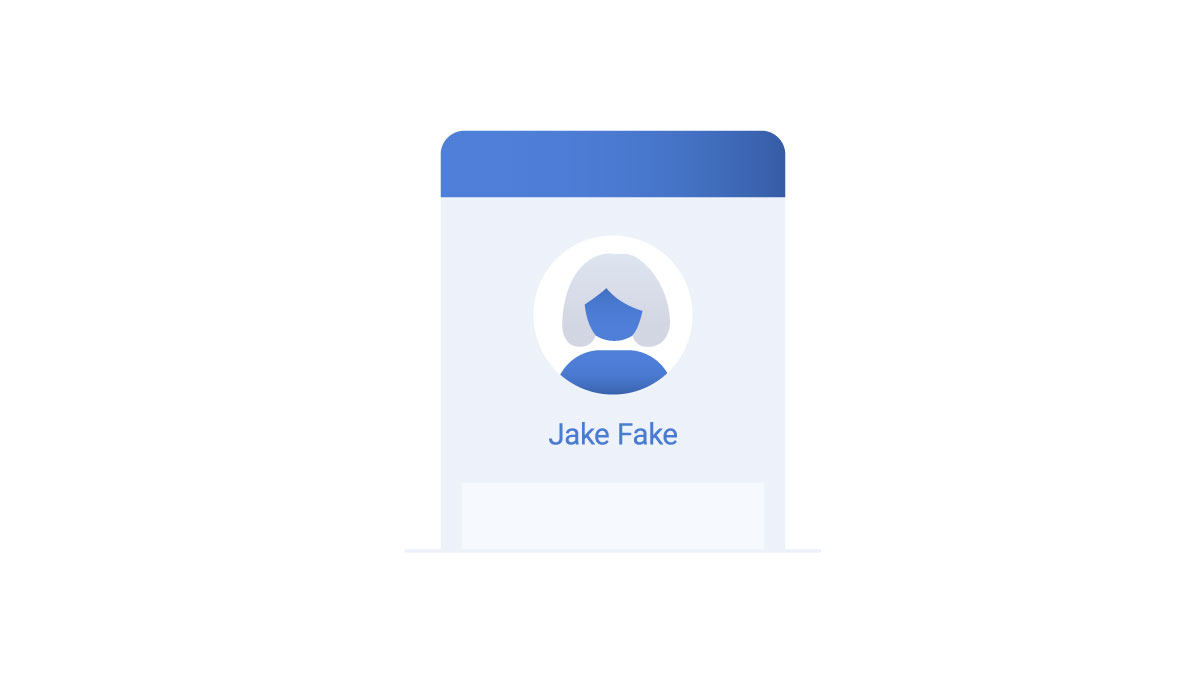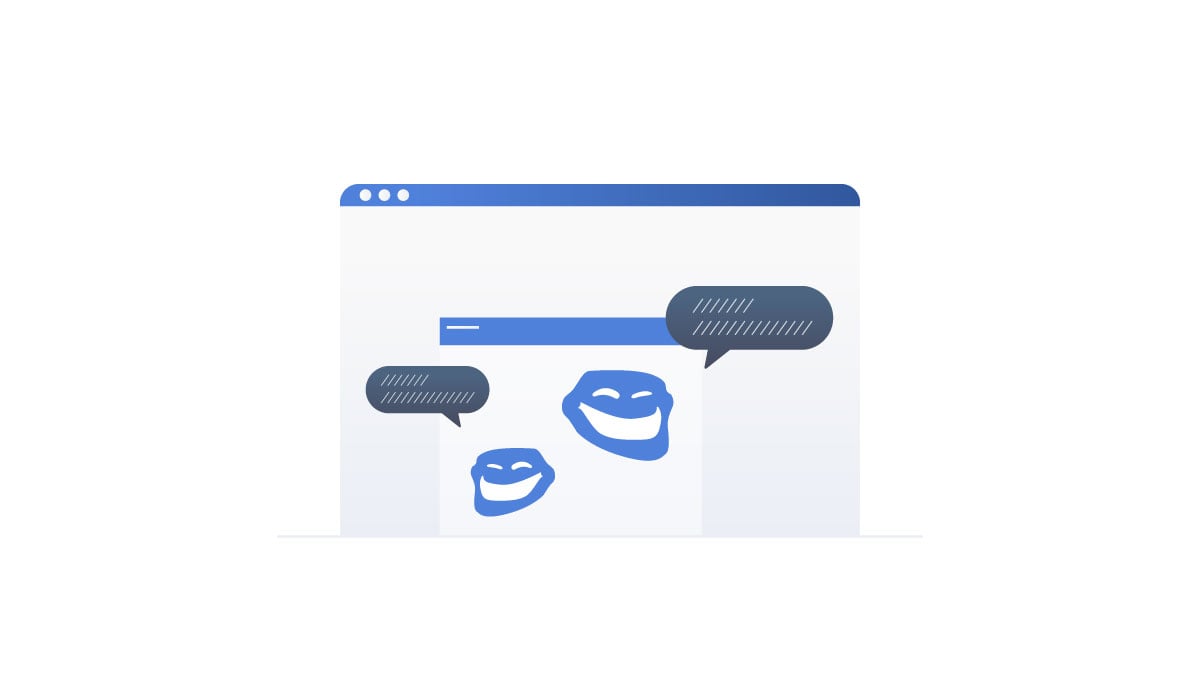What is cyberbullying?

Protecting your children from cyberbullying and ensuring their cybersecurity doesn't have to be hard. Learn how to keep them safe online so you can be there for them when they need your support.
Read this post yourself first, and then consider sharing it with your child. It will help you know what to say to your child when they're being cyberbullied and to understand when you should report cyberbullying.
Golden rules to protect your child from cyberbullying
-
Open communication. Your child will only communicate openly with you if they feel that they can trust you. If they fear that you might embarrass them at school or that you'll restrict their online access, they may not tell you when they're being cyber-bullied. If you discuss cyberbullying with your children ahead of time, reassure them that they can feel safe when they confide in you. That will make them more willing to communicate openly – just make sure you don't violate their trust! Generally, you should only intervene in a cyberbullying situation if you think your child's physical or mental health is at risk. There are plenty of other tools that can help before the situation reaches this point.
-
Education. It can be difficult for kids to understand why cybersecurity is important. Every child is different, so it's up to you to decide how to get the message across. A good tactic is to relate cybersecurity to situations your child already understands. Does your child understand that they shouldn't get into a car with strangers? Sharing your login information is very similar. Accepting candy from a complete stranger is a lot like clicking on flashy pop-ups or downloading sketchy programs.
-
Make cybersecurity fun. The science behind cybersecurity can be difficult to understand, but the basic practices are easy (click here to learn about cybersecurity for your children). They can even be fun!
-
Your child might enjoy treating their online identity like a spy game where the goal is to remain anonymous online.
-
Create a very secure password by making up a funny string of words that's easy to remember (KangarooWithLegsMadeOfJelly, for example).
-
Instead of using their real name on social media, your child can create an amusing alter-ego codename that only their friends will recognize.
-
What is cyberbullying?
Cyberbullying is any form of abuse online done to make someone feel worthless and vulnerable. We'll be discussing the situations that children and young adults face, but adults can cyberbully each other as well. However, this is often called cyber harassment or cyberstalking, and these can be punishable crimes.
Sometimes, cyberbullying is a digital extension of traditional types of bullying. However, there are some differences. The physically violent aspect of playground bullying is gone online. Instead, cyberbullying can spread abusive messages farther and faster than ever before.
There are many different types of cyberbullying. Learning to identify these practices and making sure your child is aware of them can help keep them safe. By discussing these practices with your child, you can also help prevent them from becoming cyberbullies.
What are the most common forms of cyberbullying?
Each type of cyberbullying will be followed by tips for what you should do if your kid is bullied online.
Fraping

Frape – a portmanteau of the words "Facebook" and "rape" – is the act of accessing someone's social media account using an unattended device to change personal details, engage in misleading conversations, or create embarrassing posts or status updates.
It's easy for fraping to happen when your child is around friends they trust. By sharing their device or leaving it unattended, their friends and peers can access their social media accounts. Because they trust each other, you might expect your child's friends to keep their jokes and pranks light-hearted – and perhaps they will. However, it's hard to foresee the consequences of a simple prank when it's nearly impossible to delete anything from the internet.
We know, for example, that employers research potential employees on social media. Despite being deleted, an old post made as a result of fraping could still appear in search results. The employer might think the message was truly written by your child and choose not to hire them if the content offends them.
How to protect your child
Fraping comes down to device security and password security. Your child must learn never to share their password and never to leave their device unsupervised and unlocked. Children may not understand that a fraping prank that seems funny now may have serious consequences much later. Remind them that most of what gets posted online stays there forever and can be found years later. The humor of the joke will be long forgotten but the words typed out online will still remain!
Outing

Outing is the practice of publicly revealing sensitive or embarrassing information or files. This is a common form of abuse used to target gay youth who have not yet revealed their orientation, but others can be targeted as well. Examples include bed-wetting, embarrassing medical conditions, or embarrassing mistakes your child would rather forget.
Every outing can be different and affect your child in different ways. There is no doubt, however, that it can leave emotional scars and pain in its wake.
How to protect your child
Outing is prevented by helping your children keep their private information private. This can be hard to do because privacy requires quite a broad understanding of how our information travels online.
-
Talk to your child about how they communicate online and use social media. It's OK to keep certain thoughts or feelings off of social media. Some elements of your daily life or your emotions should only be shared with your family members and the people you trust most. If there's something you want to keep private, don't share it!
-
Make sure they understand how to keep their devices secure. They should be protected with secure passwords that haven't been shared with anyone. Their devices should be locked and attended at all times.
-
Help them stay private online. If your child uses social media, review their privacy settings with them. Do they know exactly who can and can't read every tweet, status update, or video that they share?
Exclusion

Organized, targeted exclusion is a form of cyberbullying that can be performed by any number of children. It involves excluding the victim from online social activities, forums, chat groups, or other online spaces.
How to protect your child
Unfortunately, this is a difficult type of cyberbullying to prevent. If the group is managed by adults, report the cyberbullying to the adults and determine whether your child can be given access to the group. Depending on the age of the cyberbullies and the platform they're using, however, they may have the right to exclude anyone they want from their private groups. In that case, it's time to have a more in-depth discussion with your child. Why do they want to enter the group? What can they do to gain access? Can they create an alternate group with new members instead?
Harassment and stalking

These forms of cyberbullying are perhaps the most similar to physical/real-world forms of bullying. Harassment involves targeting your child's online identity (email inbox, social media, etc.) with hurtful comments or images. It can come from one assailant or many, and it can leave victims with deep emotional wounds if it isn't stopped.
Stalking overlaps with harassment in many ways, but it's often a more serious attack against your child. Some stalkers might gather private information about your child, while others might follow them across the web to continue their abuse.
How to protect your child
There are different ways to address harassment depending on who's doing it and how:
-
Block harassers: The best and simplest choice may simply be to block the harassers, so discuss this option with your child. Block them from their social media profiles and block their email addresses. There are drawbacks, however – the abuse may continue unabated behind your child's back. A persistent harasser could also create new email addresses or social media accounts to continue their harassment.
- Report harassers online: Most popular online platforms have rules against harassment. Explore your options when it comes to reporting behavior that the platform doesn't support. Discuss this option with your child as well.
-
Report harassers to other adults: Your child's harassers may be censured if you speak to their parents or other adults responsible for them. However, it's important to discuss this option with your child first – they may be reluctant to agree. They might fear embarrassment and retribution, or they might see the value of having an adult intercede. Online harassment could have a real-life component as well if your child knows the harassers, so you may be able to solve two problems at once.
Catfishing

Catfishing is the act of adopting an online identity to extract personal information or affection from the victim. Once the person behind the fake account (it can be a child or an adult) has fooled your child, they can then convince them to hand over financial details (yours or your child's) or to meet them at an unsafe location. A bully on the other end could also discover private or embarrassing information that they could then use to hurt your child.
This method can be especially dangerous for younger children who do not yet know how to identify suspicious or fake accounts.
How to protect your child
Every child should understand the limits of how much they can trust strangers. Don't talk to strangers and don't follow them away from safety, no matter what they promise you. These are important conversations that every parent or guardian must have with their child. To protect your child from catfishing, simply update your lesson for the modern age.
-
Not everyone is who they say they are online. Your child must understand how easy it is to create a fake persona online. You might even consider creating a fake persona together just to show how easy it is. The goal is not to stop them from communicating online at all – it's simply to make sure they approach every contact with a healthy dose of skepticism. Everyone online starts out as a stranger!
-
There's a line between the digital world and the real world. As long as your child knows what information they shouldn't share online, it's OK to have online friends whose identities you can't be sure of. However, no meeting or exchange of items or addresses should ever happen without adult supervision. Make sure your child understands the potential danger that strangers pose and understands that any friend they made online is still a stranger.
Trolling

Trolling is the act of intentionally communicating with someone online in a way that is likely to evoke anger and frustration. There are as many ways to troll as there are trolls, but one thing is certain – they all love to see their victims get upset.
There are few ways for trolling to evolve into a serious cybercrime, but it can be hard to cope with for children and young adults who aren't yet completely in control of their emotions. Teaching them to recognize and deal with trolling will make life easier – for you and for them.
How to protect your child
Resisting trolling requires emotional maturity, making it a good learning opportunity for your child.
-
Learn to recognize a troll. Some trolls are hard to recognize or may not even consider themselves trolls, but there are some tell-tale signs. Trolls can take up absurd positions in arguments, frequently resort to name-calling, and adopt false identities online. If your child knows they're arguing with a troll, it'll be easier for them to ignore them. Don't let them get under your skin!
-
You can always walk away. Most online conversations and situations are much easier to walk away from than in the real world. Users can be blocked, browser windows can be closed, phones can be silenced, and notifications can be turned off. Knowing when to walk away is an important life skill!
Other tips
Now that you know the main types of cyberbullying and how to deal with them, here are some general tips:
-
Respect their privacy: It's important to balance security and trust, depending on your child's age. Once you are confident you've taught your child everything they need to know about staying safe online, you need to let them apply those lessons. Mutual trust will make it easier for your child to talk to you about situations where they may truly need your guidance.
-
Monitor the important stuff: With that being said, there are certain things you must keep track of. Keep your financial information secure. If your child has a credit or debit card linked to your account, track their expenditures regularly. A bus ticket purchase, for example, could mean that someone has convinced your child to meet them in person.
- Teach them about cybersecurity: Protecting them from cyberbullying is not enough – make sure they understand the basic rules of cybersecurity. It's impossible to escape the influence of the internet – they'll need to know how to stay secure to survive in the 21st century. Our blog is a good place to start!
-
Talk it out: Take time to discuss cyberbullying and cybersecurity regularly with your child. Make sure they understand the lessons outlined above. Find out how they'd like you to respond to incidents of cyberbullying, or if they'd prefer you not get involved. If your child is feeling down, find out why. They might be more willing to talk about their cyberbullying if they trust you.
